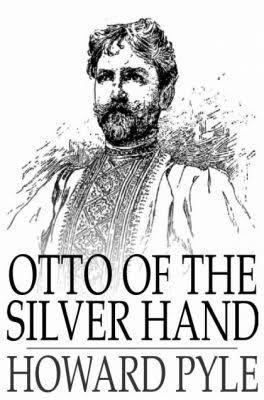7.6 /10 1 Votes7.6
Language English Media type Print OCLC 970079 Country United States of America | 3.8/5 Goodreads Publication date 1888 ISBN 0-486-21784-1 Originally published 1888 Genre Children's literature | |||||||||||||||||||||||||||||||||
 | ||||||||||||||||||||||||||||||||||
Similar Howard Pyle books, Children's literature, Classical Studies books | ||||||||||||||||||||||||||||||||||
Otto of the silver hand full audiobook
Otto of the Silver Hand is a children's novel about the Dark Ages written and illustrated by Howard Pyle. It was first published in 1888 by Charles Scribner's Sons. The novel was one of the first written for young readers that went beyond the chivalric ideals of the time period, and showed how cruel the time period could really be.
Contents
- Otto of the silver hand full audiobook
- Otto of the silver hand by howard pyle book reading british english female voice
- Plot summary
- Characters
- Reception
- References
Otto of the silver hand by howard pyle book reading british english female voice
Plot summary
The book centers around the life of Otto, the son of German warlord Baron Conrad. Otto's mother, Baroness Matilda, has died in premature labour, brought on by the sight of the Baron's battle wounds, prompting Conrad to take his newborn son to be raised in a nearby monastery. When Otto reaches the age of eleven his father returns to claim him from the gentle monks, taking him back to live in Castle Drachenhausen, ("Dragons' House", in German) the ancestral mountaintop fortress from which the Baron launches his attacks. Here Otto learns of and is horrified by his father's life as a robber baron. Otto is particularly horrified by the revelation of how Conrad killed a defeated, surrendering enemy, Baron Frederick. A rival robber baron, Baron Frederick had been with his men defending a column of merchants in return for the tribute they were paying him.
Shortly thereafter, Baron Conrad obeys a summons to the Imperial Court, taking the vast majority of his men-at-arms with him as an impressive escort but leaving Castle Drachenhausen practically undefended as a result. The late Baron Frederick's heir, his nephew Baron Henry, then attacks the castle and burns it to the ground. Baron Henry then takes Otto captive to his own fortress, Castle Trutzdrachen ("Dragon-scorner," in German). In the dungeon of his castle, Baron Henry explains to Otto that he has sworn a solemn oath that any member of Baron Conrad's House who fell into his hands would never be able to strike a blow like the one which killed his uncle, Baron Frederick. Because Otto is so young, the Baron keeps this oath by cutting off his right hand instead of killing him, and as an afterthought has a healer sent to tend to him. While Otto is feverish from the pain of his wound, he is comforted by Baron Henry's eight-year-old daughter Pauline, who visits his cell.
Otto's father Baron Conrad then returns and rescues him with the help of a few remaining loyal followers. Baron Henry and his men give chase and Otto's father kills Baron Henry in single combat but dies in the process, choosing to sacrifice his life so that his son can escape. Otto flees to the monastery where he grew up and is given refuge there. After Otto regains his health the Abbot accompanies him to an audience with the Emperor, who promises restitution and takes responsibility for Otto's future upbringing.
Otto becomes a respected statesman, marries his former captor's daughter Pauline, and is known for his wise counsel and peaceful nature. His amputated swordhand is replaced by an artificial and immobile one made of silver. The Emperor has Castle Drachenhausen rebuilt for the couple and over the gatehouse is carved the motto "Manus Argentea Quam Manus Ferrea Melior Est", which translated from Latin means "A hand of silver is better than a hand of iron".
Characters
Reception
After its release the New York Times gave the book's illustrations a mixed review:
The illustrations made by Mr. Howard Pyle for his medieval tale "Otto of the Silver Hand," are of varied merit, sometimes alive with action, at others dull and even badly drawn and composed... Mr. Pyle gets something of the rudeness of ancient woodcuts into his work, though perhaps the rugged note is exaggerated. The volume is one of the prettiest issued by Charles Scribner's Sons for the holidays, the cover emblazoned with the shield bearing a hand argent on guies.
Kirkus Reviews found "This is still- as it was through the half century since its writing- probably the best picture of the period for the junior reader." while the Children's Literature Association Quarterly wrote "It is also one of the most remarkable [historical novels], and it set the standard for many novels written since."
